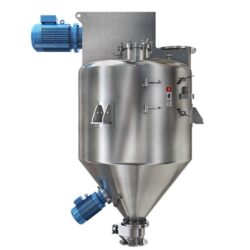Dry Mixing System
Dry mixing is the process of combining different powders in a mixing chamber to create a uniform mixture. This means that all the different powders are evenly distributed throughout the final product.
More info
Purpose of Dry Mixing
The main purpose of dry mixing is to ensure that the final product has a consistent composition.
This is important in many industries, such as food, pharmaceuticals, and construction,
where the quality and performance of the product depend on having a uniform mixture.
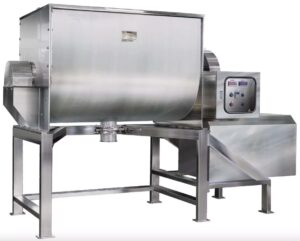
Defining the Performance of Mixing
The performance of mixing can be defined by how well the powders are blended together. Here are some key factors to consider:
- Homogeneity: This measures how evenly the different powders are distributed in the mixture. A good mix will have a high level of homogeneity.
- Mixing Time: The amount of time it takes to achieve a uniform mixture. Efficient mixing processes aim to reduce mixing time while still achieving good homogeneity.
- Energy Consumption: The amount of energy required to achieve the desired mix. Lower energy consumption is preferred for cost efficiency.
- Particle Size Distribution: Ensuring that the particle sizes of the powders are compatible can affect the mixing performance. Uniform particle sizes usually mix better.
By focusing on these factors, you can evaluate and improve the performance of your dry mixing process.
7 Factors for Consideration To Design Your Mixer Blender
- Capacity and Size
Choose a blender that matches your batch sizes and production needs. Make sure it fits in your facility and can handle larger batches if your production increases.
A right-sized blender prevents problems like incomplete batches or overflow and avoids wasting space. - Material of Construction
The material of the blender affects its durability and compatibility with your products. Stainless steel is common for its strength and easy cleaning,
but other materials like Hastelloy or titanium are better for harsh chemicals. Carbon steel is cheaper but can rust unless coated. - Mixing Speed and Power
The speed and power of the blender are important for good mixing. Faster speeds mix better but can add air to the mix.
The motor must be strong enough to handle full loads without stalling. - Design Features
Custom features can improve your blender’s performance. Double ribbons mix dense products better, and jacketed containers control temperature.
Multiple discharge ports and slide gates help with unloading and flow control. Choose features that match your specific needs. - Maintenance and Cleaning
Easy maintenance and cleaning are crucial. Look for features like clean-in-place systems and access doors for inspection.
Avoid designs that trap residues. High-quality parts last longer and need less maintenance. Regular checks and maintenance prevent big problems. - Safety Considerations
Safety is key. Ensure the blender has guards around moving parts and emergency stop buttons. Explosion vents are important for handling volatile powders.
Lockable disconnects prevent accidental startups. - Cost & Value For Considerations
Consider the total value of ownership, not just the purchase price.
Higher-quality blenders cost more upfront but save money over time with fewer repairs and lower maintenance. Efficient motors reduce energy costs.
Good warranties and support are also important.
Types Of Blender
Paddle mixer
A gentle agitator for blending dry materials, such as coating nuts, blending salads, or creating slurries.
Paddle blenders can be engineered to cook and blend at the same time.
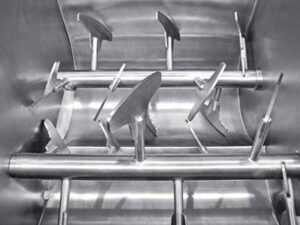
Ribbon blender
A horizontal U-shaped blender with a revolving agitator that’s commonly used to blend powders, powder with liquid, and powder with granules.

V blender
A simple, reliable, and easy-to-clean blender that’s often used to mix dry bulk solids in batch. The V-shaped cone in a V mixer provides ample space for blending.
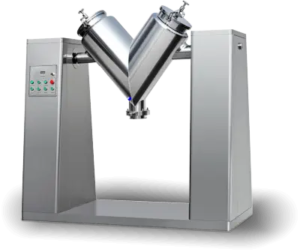
3D mixer
3D mixer that’s primarily used for homogenization and has a short mixing time compared to a fluid mixer.
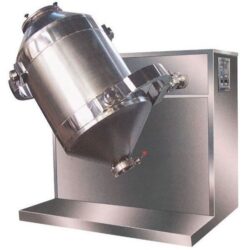
Vertical Powder Mixer Blending Machine
Vertical Mixer is a super innovation that combines all the advantages of precise mixing homogeneity,
highly hygienic design, complete discharge with minimum residue,
wide range of loading volume, robust design with long duty life and many others.
